
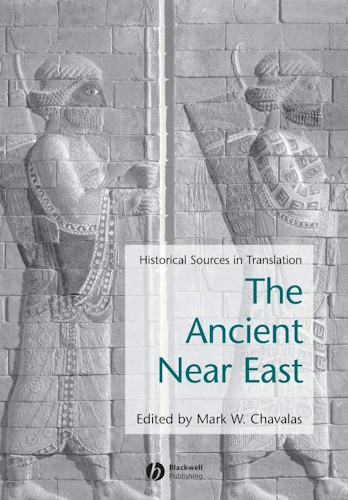

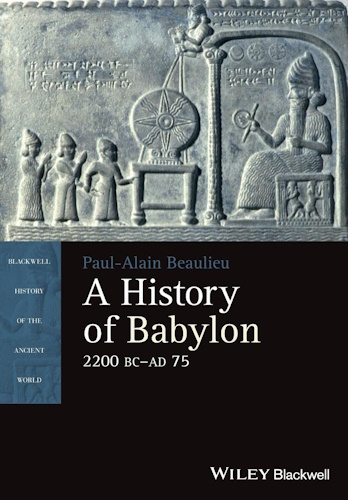

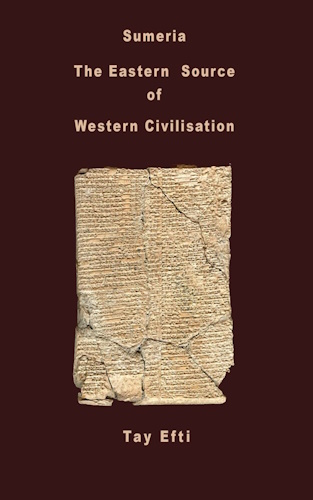



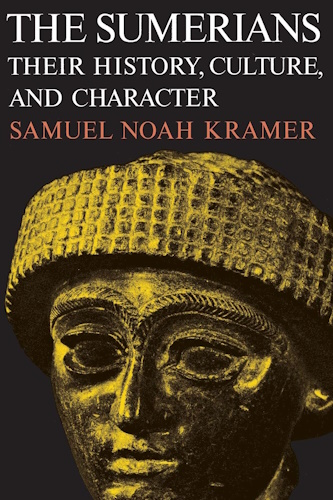

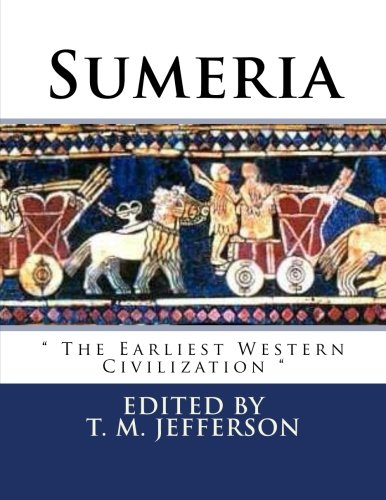

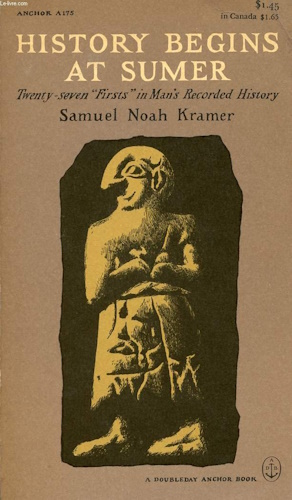

Chronology
of
Babylonia and Assyria
EncyclopediaKids.net.au
The later chronology of Assyria has long been fixed, thanks to the lists of limmi, or archons, who gave their names in succession to their years of office. Several copies of these lists from the library of Nineveh are in existence, the earliest of which goes back to 911 B.C., while the latest comes down to the middle of the reign of Assur-bani-pal. The beginning of a king's reign is noted in the lists, and in some of them the chief events of the year are added to the name of its archon, Assyrian chronology is, therefore, certain from 911 B.C. to 666, and an eclipse of the sun which is stated to have been visible in the month Sivan, 763 B.C., is one that has been calculated to have taken place on the 15th of June of that year. The system of reckoning time by limmi was of Assyrian origin, and recent discoveries have made it clear that it went back to the first days of the monarchy. Even in the distant colony at Kara Euyuk near Kaisariyeh (Caesarea) in Cappadocia cuneiform tablets show that the Assyrian settlers used it in the 15th century B.C. In Babylonia a different system was adopted. Here the years were dated by the chief events that distinguished them, as was also the case in Egypt in the epoch of the Old Empire. What the event should be was determined by the government and notified to all its officials; one of these notices, sent to the Babylonian officials in Canaan in the reign of Samsuiluna, the son of Khammurabi, has been found in the Lebanon. A careful register of the dates was kept, divided into reigns, from which dynastic lists were afterwards compiled, giving the duration of each king's reign as well as that of the several dynasties. Two of these dynastic compilations have been discovered, unfortunately in an imperfect state.
In addition to the chronological tables, works of a more ambitious and literary character were also attempted of the nature of chronicles. One of these is the so-called "Synchronous History of Assyria and Babylonia," consisting of brief notices, written by an Assyrian, of the occasions on which the kings of the two countries had entered into relation, hostile or otherwise, with one another; a second is the Babylonian Chronicle discovered by Dr Th. G. Pinches, which gave a synopsis of Babylonian history from a Babylonian point of view, and was compiled in the reign of Darius. It is interesting to note that its author says of the battle of Khalule, which we know from the Assyrian inscriptions to have taken place in 691 or 690 B,C., that he does "not know the year" when it was fought: the records of Assyria had been already lost, even in Babylonia. The early existence of an accurate system of dating is not surprising; it was necessitated by the fact that Babylonia was a great trading community, in which it was not only needful that commercial and legal documents should be dated, but also that it should be possible to refer lasily to the dates of former business transactions. The Babylonian and Assyrian kings had consequently no difficulty in determining the age of their predecessors or of past events. Nabonidus (Nabunaid), who was more of an antiquarian than a politician, and spent his time in excavating the older temples of his country and ascertaining the names of their builders, tells us that Naram-Sin, the son of Sargon of Akkad, lived 3200 years before himself (i.e. 3750 B.c.), and Sagarakti-suryas 800 years; and we learn from Sennacherib that Shalmaneser I. reigned 600 years earlier, and that Tiglath-pileser I. fought with Merodach-nadin-akhi (Marduk-nadin-akh~) of Babylon 418 years before the campaign of 689 B.c.; while, according to Tiglath-pileser I., the high-priest Samas-Hadad, son of IsmeDagon, built the temple of Anu and Hadad at Assur 701 years before his own time. Shalmaneser I. in his turn states that the high-priest Samas-Hadad, the son of Bel-kabi, governed Assur 580 years previously, and that 159 years before this the highpriest Erisum was reigning there. The raid of the Elamite king Kutur-Nakhkhuntë is placed by Assur-bani-pal 1635 years before his own conquest of Susa, and Khammurabi is said by Nabonidus to have preceded Burna-buryas by 700 years.
Modern critical revision with suggested updating as follow:
It is generally accepted by the archaeological consnsus that the son of Sargon of Akkad cannot be placed as high as in 3750 BCE. As the reign of King Nabonidus ended by the accession of Cyrus in Babylonia around 539 or 538 BCE, the years may have been given by actual modern half years. The Jewish chronology[?] and the Old Testament has the same situation with the same dilemma. Their "years" may have been commenced both by the first day of Nisanu[?] (Nisan) and that of Tashritu[?] (Tishri[?]) in their remote histories. Therefore, it is likely that the correct interval is not 3200 but 1600. It is probably a rounded figure. One must be careful with the several intervals between rulers and events cited by the above mentioned unearthed documents. We cannot prove that a totally reliable chronological list was available for all the scribes, and they have been versed historians. They may have been pressed to give a figure but not enough time for a thorough research. Many of the figures contradict to each other, etc.
We start our list of Babylonian kings[?] with a significant ruler of Erech called Lugalzaggisi[?], placing him from 2411 to 2376. He was a contemporary of Urukagina[?] king of Lagash (reigned 2407-2399) and Sargon (2399-2343) king of Akkad.
After Sargon, the next king was Rimush[?](...). His contemporary in Ur was Ka-kug[?] or Ka-ku (2376-2341). The son and successor of Rimush was Manishtusu[?] (2334-2329), whose Assyrian viceroy was Abazu[?], son of Nuabu[?].
In this period the rulers of Kish were Simudarra[?] or Simudar (2399-2369), a contemporary of Sargon. After him Usi-watar[?] (2369-2362), Eshtarmuti[?] (2362-2351), Ishme-shamash[?] (2351-2340), and Nannia[?] (2340-2243) reigned in Kish.
In Akkad, after Manishtusu, the following kings reigned:
- 2329-2282 Naram-sin[?]
- 2282-2257 Shar-kali-sharri[?]
He was contemporary with the first Gutian[?] king, Erridupizir[?], and he later defeated Sarlagab, another king of Gutium[?].
- 2257-???? Igigi[?], Nanum[?], and Imi[?], pretenders
- ????-2254 Elulu[?], a pretender, maybe King Elul(u)mesh of Gutium.
- 2254-2233 Dudu[?]
- 2233-2218 Shu-durul[?]
Shu-durul was the last ruler. (Agade/Akkad was defeated by Erech. Then Erech dominated until 2194, then eight Median-Elamite[?] usurper tyrants ruled for 224 years, according to Berossos[?], from 2194 to 1970 BCE. Some of them are listed here.)
Erech:
- 2219-2212 Ur-nigin[?](ak)
- 2212-2206 Ur-gigir[?](ak)
- 2206-2200 Kudda or Gudea
- 2200-2195 Puzur-ili[?]
- 2195 (?) Lugal-melam[?] (?)
- 2195-2189 Ur-utu[?](k)
- 2189-2179 Utu-khegal[?] or Utu-khengal
He was a contemporary of Tirigan, the last king of the Guti[?].
During this period the Gutian[?] or Guti kings flourished as follow:
- 2280-2277 Erridupizir[?], the first ruler.
- 2277-2274 Imta[?]
- 2274-2268 Inkishush[?]
- 2268-2265 Sarlagab[?]
- 2265-2259 Shulme'[?]
- 2259-2253 Elulmesh[?] or Elulu-mesh
- 2253-2248 Inimabakesh[?]
- 2248-2242 Igeshaush[?]
- 2242-2227 Iarlangab[?] or Iarlagab
- 2227-2224 Ibate[?]
Ibate's name curiously reminds one to Ibates[?], one of the earliest ancestors in the Irish and the Scottish pedigrees.
- 2224-2221 Iarlangab[?]
- 2221-2220 Kurum[?]
- 2220-2217 Habil-kin[?]
- 2217-2215 La'erabum[?]
- 2215-2213 Irarum[?]
- 2213-2212 Ibranum[?]
- 2212-2210 Hablum[?]
- 2210-2203 Puzur-sin[?]
- 2203-2196 Iarlaganda[?]
- 2196-2189 Si'u or Si'um[?]
- 2189-2189 Tirigan[?]
Tirigan reigned only for 40 days, according to Jacobsen. His chrononolgical table (1934: 208 ff.) has placed the accession of Ur-Nammu[?] (Dynasty III of Ur[?]) ten years after the end of Utu-khegal[?]'s reign. His fall may or may not have coincided with his lost battle against Erech. This famous battle took place on the day of an eclipse of the moon, on the 14th day of the month Duzu[?] or Tammuz, from the first watch to the middle watch. See Schoch[?] (1927: B6-B8), and Thorkild Jacobsen[?], The Sumerian King List (Chicago, 1934: 203). This is the first eclipse record in the Near East that is identifiable with high probability. It took place on August 13, 2189 BC, with a magnitude of 120% which is remarkable.
After the defeat of Gutium, the Third Dynasty of Ur[?] was fourishing:
- 2179-2161 Ur-Nammu[?] or Ur-Engur[?]
- 2161-2113 Shulgi[?]
A double (solar and lunar) eclipse took place 23 years after Shulgi's accession to the throne. Prof. Jacob Klein[?] of Bar-Ilan University[?] in his book Three Sulgi hymns (1981: 59 and 81) tells that the first 23 years of his reing was peaceful, and that the sun was eclipsed on the horizon, just like the moon on the sky, during the first battles of Sulgi. (Most historians do not feel confident about their own astronomical profiency, therefore the extreme importance of this double eclipse record remained unnoticed. Another difficulty is that the reading has a questionmark.) Z.A. Simon adds that the lunar eclipse is mentioned first in the poem, because the worship of Sin (The moon) was predominant for them, and that the record is poetic, not that of an astronomer. This rare phaenomena[?] occurred on May 9, 2138 BCE (solar eclipse), with a magnitude of 34%. The lunar eclipse took place on May 24, 2138 BCE.
- 2113-2104 Amar-Sin[?] or Bur-Sin. His viceroy in Assyria was Zariqum[?].
- 2104-2095 Shu-Sin[?]
An eclipse of the moon observed in the month Simanu[?] (Sivan[?]) may be placed near the end of Shu-sin's reign, called patricide eclipse[?] in the literature. The clipse "drew through" and "equalized" the first watch, meaning that has coincided with it, then touched the second watch. It took place on July 25, 2095 BCE. Refer to Carl Schoch[?], Die Ur-Finsternis (Berlin, 1927: B6-B8). Professor Peter J. Huber[?], Astronomy and Ancient Chronology in the journal Accadica (Vol. 119-120 deals with this issue about the omen EAE 20-III. We have learned from him that it may have belonged the the death of Shulgi, or it may have been another king, for the name is not mentioned. (Therefore, it could have belonged to Shu-sin, we believe, also adding that the expression will wrong him does not necessarily mean murdering a king. We note here that the data evaluated by Huber (page 166) "rejects the middle chronologies on the 1% level... this is a strong argument against the correctness of the middle chronologies." (Editor's note: those are still in common use.)
- 2095-2070 Ibbi-Sin[?]
Ibbi-Sin's reign lasted for 24 or 26 years (S. Langdon and John K. Fotheringham[?], The Venus tablets of Ammizaduga[?], 1928). An eclipse of the moon caused terror shortly before his fall, in the month Addaru[?] or Adar. The real eclipse had a magnitude of 153%. (Schoch describes this eclipse as well, proposing a different candidate.)
A few years before the fall of Ibbi-Sin, another city started to flourish: Isin[?]. Its first ruler had emerged several years earlier. The kings of Isin are as follow:
- 2083-2050 Ishbi-erra[?]
- 2050-2040 Shu-ilishu[?]
- 2040-2019 Iddin-dagan[?]
- 2019-2000 Ishme-dagan[?]
- 2000-1989 Lipit-Ishtar[?]
- 1989-1961 Un-ninurta[?]
- 1961-1940 Bur-sin[?] or Amar-sin[?]
- 1940-1935 Lipit-enlil[?]
- 1935-1927 Erra-imitti[?] or Ura-imitti
- 1927-1927 Tabbaya[?]
- 1927-1903 Enlil-bani[?]
- 1903-1900 Zambiya[?]
- 1900-1896 Iter-pisha[?]
- 1896-1892 Ur-dulkugga[?]
- 1892-1881 Sin-magir[?]
- 1881-1858 Damiq-ilishu[?]
The First Dynasty of Babylon was almost contemporary with Isin. Their chronology is debated, because there is a King List A and a Babylonian King List B[?]. Hereby we follow the regnal years of List A, because those are widely used, although we believe that the other list is better, at least for one or two reigns out of the first six. (The reigns in List B are longer, in general. Unfortunately, it is not available for the editor.)
- 1959-1945 Su-abu[?] or Suum-abum[?]
- 1945-1909 Sumula-ilum[?]
- 1909-1895 Sabium[?] or Sabum[?]
- 1895-1877 Apil-Sin[?]
- 1877-1857 Sin-muballit[?]
- 1857-1814 Hammurabi
His other name was Hammurapi-ilu[?], meaning Hammurapi the god or perhaps Hammurapi is god. He could have been Amraphel king of Sinear[?] in the Jewish records and the Bible, a contemporary of Abraham.
- 1814-1776 Samsu-ilana[?]
- 1776-1748 Abi-eshuh[?] or Abieshu
- 1748-1711 Ammi-ditana[?]
- 1711-1690 Ammi-zaduga[?] or Ammisaduqa
His Venus-tablets[?] (i.e., several ancient versions on clay tablets) are famous, and several books had been published about them. Several dates have been offered but the old dates of many sourcebooks seens to be outdated and incorrect. There are further difficulties: the 21 years span of the detailed observations of the planet Venus may or may not coincide with the reign of this king, because his name is not mentioned, only the Year of the Golden Throne[?]. A few sources, some printed almost a century ago, claim that the original text mentions an occultation of the Venus by the moon. It seems to me a misinterpretation because the original texts in the book of Erica Reiner[?] and D. Pingree[?], The Venus Tablet of Ammisaduqa there is no such sentence. Prof. P.J. Huber's detailed calculations at this point also prefer 1659 for the fall of Babylon, based on the statistical probability of dating based on the planet's observations. He finds the presently accepted middle chronology too low from the astronomical point of view.
- 1690-1659 Samsu-ditana[?]
A text about the fall of Babylon[?] by the Hittites of Mursilis[?] I at the end of Samsuditana's reign tells about a twin eclipse is crucial for a correct Babylonian chronology. (The reading of the word Babylon is uncertain but why should a Babylonian tablet refer to another city?). The pair of lunar and solar eclipses occurred in the month Shimanu[?] (Sivan[?]). Professor Peter J. Huber has computed several options that would satisfy the conditions of the detailed description. The lunar eclipse took place on February 9, 1659 BCE. It started at 4:43 and ended at 6:47. The latter was invisible which safisfies the record which tells that the setting moon was still eclipsed. The solar eclipse occurred on February 23, 1659. It started at 10:26, has its maximum at 11:45, and ended at 13:04. See Peter Huber, Astronomical dating of Babylon I and Ur III in Monographic Journals of the Near East (1982: 41).
The Assyrian kings[?] of this period are as follow:
- Zuabu
- Nuabu, son of Zuabu
- Abazu, viceroy of Manishtusu of Akkad, son of Nuabu, died c. 2330
- Belu or Tillu, son of Abazu, died c. 2309
- Asarah, son of Belu, died c. 2288
- Ititi
- Enlil-kabkabu
- Ushpia, son of Asarah, died c. 2267
- Apiashal, the 17th tent-dweller king, son of Ushpia, died c. 2246
- Halu, son of Apiashal, died c. 2226
- Samanu, son of Halu, died c. 2205
- Haianu, son of Samanu, died c. 2184
- Ilu-mer, son of Haianu, died c. 2164
- Iakmesi, son of Ilu-mer, died c. 2143
- Azuzu or Uzuzu
- Urda or Urdahi
- Zariqum (c. 2116-?), viceroy of Amar-sin
- Iakmeni, son of Iakmesi, died c. 2122
- Iazkur-ilu, son of Iakmeni, died c. 2101
- Ilu-kapkapi, son of Iazkur-ilu, died c. 2080
- Aminu, son of Ilu-kapkapi, died, c. 2060
- Sulili, son of Aminu, died c. 2039. End of the dynasty.
![]()
![]()
Disclaimer:
Some material presented will contain links, quotes, ideologies, etc., the contents of which should be understood to first, in their whole, reflect the views or opinions of their editors, and second, are used in my personal research as "fair use" sources only, and not espousement one way or the other. Researching for 'truth' leads one all over the place...a piece here, a piece there. As a researcher, I hunt, gather and disassemble resources, trying to put all the pieces into a coherent and logical whole. I encourage you to do the same. And please remember, these pages are only my effort to collect all the pieces I can find and see if they properly fit into the 'reality aggregate'.
Personal Position:
I've come to realize that 'truth' boils down to what we 'believe' the facts we've gathered point to. We only 'know' what we've 'experienced' firsthand. Everything else - what we read, what we watch, what we hear - is what someone else's gathered facts point to and 'they' 'believe' is 'truth', so that 'truth' seems to change in direct proportion to newly gathered facts divided by applied plausibility. Though I believe there is 'truth', until someone representing the celestial realm visibly appears and presents the heavenly records of Facts And Lies In The Order They Happened, I can't know for sure exactly what "the whole truth' on any given subject is, and what applies to me applies to everyone. Until then I'll continue to ask, "what does The Urantia Book say on the subject?"
~Gail Bird Allen
![]()
![]()














-
Urantia Book, 44:0.11 - The Celestial Artisans
Never in your long ascendancy will you lose the power to recognize your associates of former existences. Always, as you ascend inward in the scale of life, will you retain the ability to recognize and fraternize with the fellow beings of your previous and lower levels of experience. Each new translation or resurrection will add one more group of spirit beings to your vision range without in the least depriving you of the ability to recognize your friends and fellows of former estates.
-
Princess Bride 1987 Wallace Shawn (Vizzini) and Mandy Patinkin (Inigo Montoya)
Vizzini: HE DIDN'T FALL? INCONCEIVABLE.
Inigo Montoya: You keep using that word. I do not think it means what you think it means. -
Urantia Book, 117:4.14 - The Finite God
And here is mystery: The more closely man approaches God through love, the greater the reality -- actuality -- of that man. The more man withdraws from God, the more nearly he approaches nonreality -- cessation of existence. When man consecrates his will to the doing of the Father's will, when man gives God all that he has, then does God make that man more than he is.
-
Urantia Book, 167:7.4 - The Talk About Angels
"And do you not remember that I said to you once before that, if you had your spiritual eyes anointed, you would then see the heavens opened and behold the angels of God ascending and descending? It is by the ministry of the angels that one world may be kept in touch with other worlds, for have I not repeatedly told you that I have other sheep not of this fold?"
-
Urantia Book, Foreword - 0:12.12 - The Trinities
But we know that there dwells within the human mind a fragment of God, and that there sojourns with the human soul the Spirit of Truth; and we further know that these spirit forces conspire to enable material man to grasp the reality of spiritual values and to comprehend the philosophy of universe meanings. But even more certainly we know that these spirits of the Divine Presence are able to assist man in the spiritual appropriation of all truth contributory to the enhancement of the ever-progressing reality of personal religious experience—God-consciousness.
-
Urantia Book, 1:4.3 - The Mystery Of God
When you are through down here, when your course has been run in temporary form on earth, when your trial trip in the flesh is finished, when the dust that composes the mortal tabernacle "returns to the earth whence it came"; then, it is revealed, the indwelling "Spirit shall return to God who gave it." There sojourns within each moral being of this planet a fragment of God, a part and parcel of divinity. It is not yet yours by right of possession, but it is designedly intended to be one with you if you survive the mortal existence.
-
Urantia Book, 1:4.1 - The Mystery Of God
And the greatest of all the unfathomable mysteries of God is the phenomenon of the divine indwelling of mortal minds. The manner in which the Universal Father sojourns with the creatures of time is the most profound of all universe mysteries; the divine presence in the mind of man is the mystery of mysteries.
-
Urantia Book, 1:4.6 - The Mystery Of God
To every spirit being and to every mortal creature in every sphere and on every world of the universe of universes, the Universal Father reveals all of his gracious and divine self that can be discerned or comprehended by such spirit beings and by such mortal creatures. God is no respecter of persons, either spiritual or material. The divine presence which any child of the universe enjoys at any given moment is limited only by the capacity of such a creature to receive and to discern the spirit actualities of the supermaterial world.
-
Urantia Book, 11:0.1 - The Eternal Isle Of Paradise
Paradise is the eternal center of the universe of universes and the abiding place of the Universal Father, the Eternal Son, the Infinite Spirit, and their divine co-ordinates and associates. This central Isle is the most gigantic organized body of cosmic reality in all the master universe. Paradise is a material sphere as well as a spiritual abode. All of the intelligent creation of the Universal Father is domiciled on material abodes; hence must the absolute controlling center also be material, literal. And again it should be reiterated that spirit things and spiritual beings are real.
-
Urantia Book, 50:6.4 - Planetary Culture
Culture presupposes quality of mind; culture cannot be enhanced unless mind is elevated. Superior intellect will seek a noble culture and find some way to attain such a goal. Inferior minds will spurn the highest culture even when presented to them ready-made.
-
Urantia Book, 54:1.6 - True And False Liberty
True liberty is the associate of genuine self-respect; false liberty is the consort of self-admiration. True liberty is the fruit of self-control; false liberty, the assumption of self-assertion. Self-control leads to altruistic service; self-admiration tends towards the exploitation of others for the selfish aggrandizement of such a mistaken individual as is willing to sacrifice righteous attainment for the sake of possessing unjust power over his fellow beings.
-
Urantia Book, 54:1.9 - True And False Liberty
How dare the self-willed creature encroach upon the rights of his fellows in the name of personal liberty when the Supreme Rulers of the universe stand back in merciful respect for these prerogatives of will and potentials of personality! No being, in the exercise of his supposed personal liberty, has a right to deprive any other being of those privileges of existence conferred by the Creators and duly respected by all their loyal associates, subordinates, and subjects.
-
Urantia Book, 54:1.8 - True And False Liberty
There is no error greater than that species of self-deception which leads intelligent beings to crave the exercise of power over other beings for the purpose of depriving these persons of their natural liberties. The golden rule of human fairness cries out against all such fraud, unfairness, selfishness, and unrighteousness.




